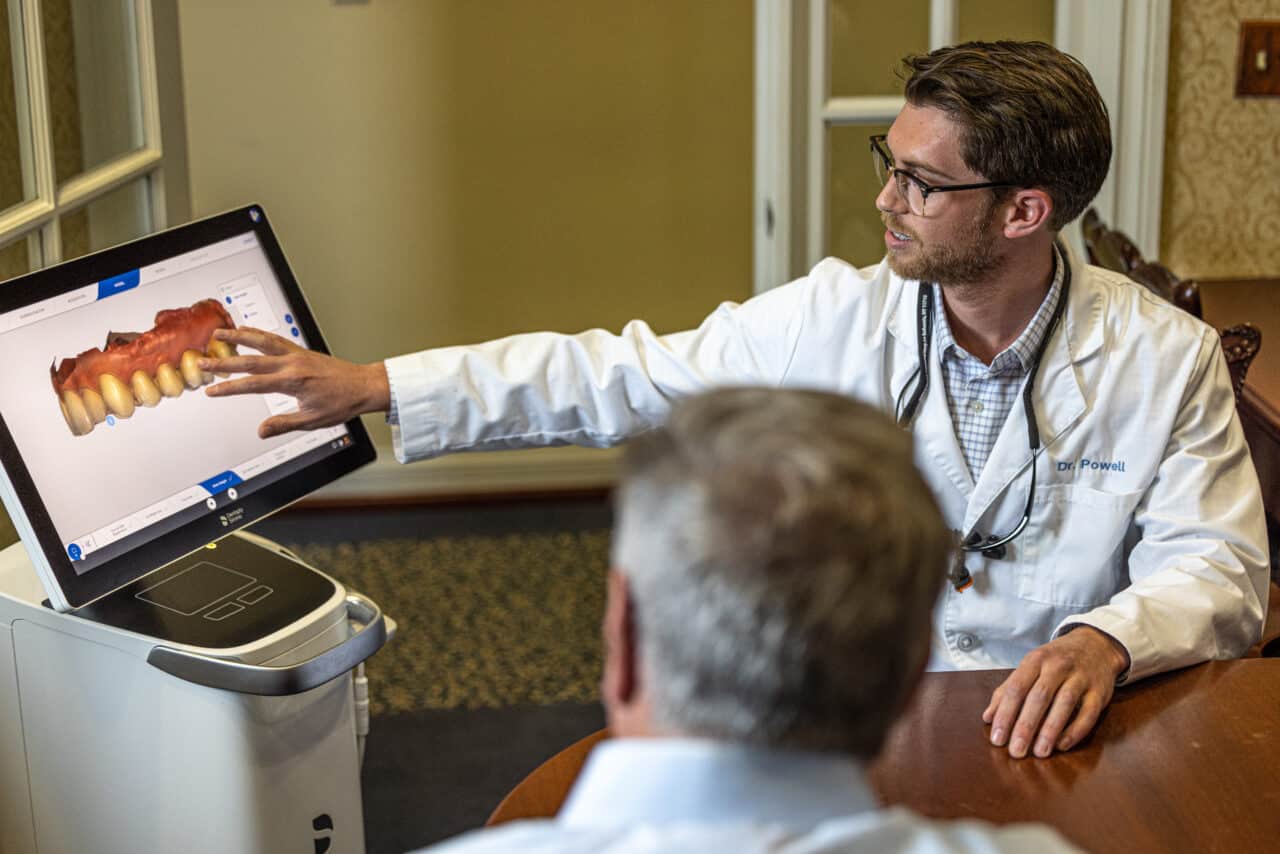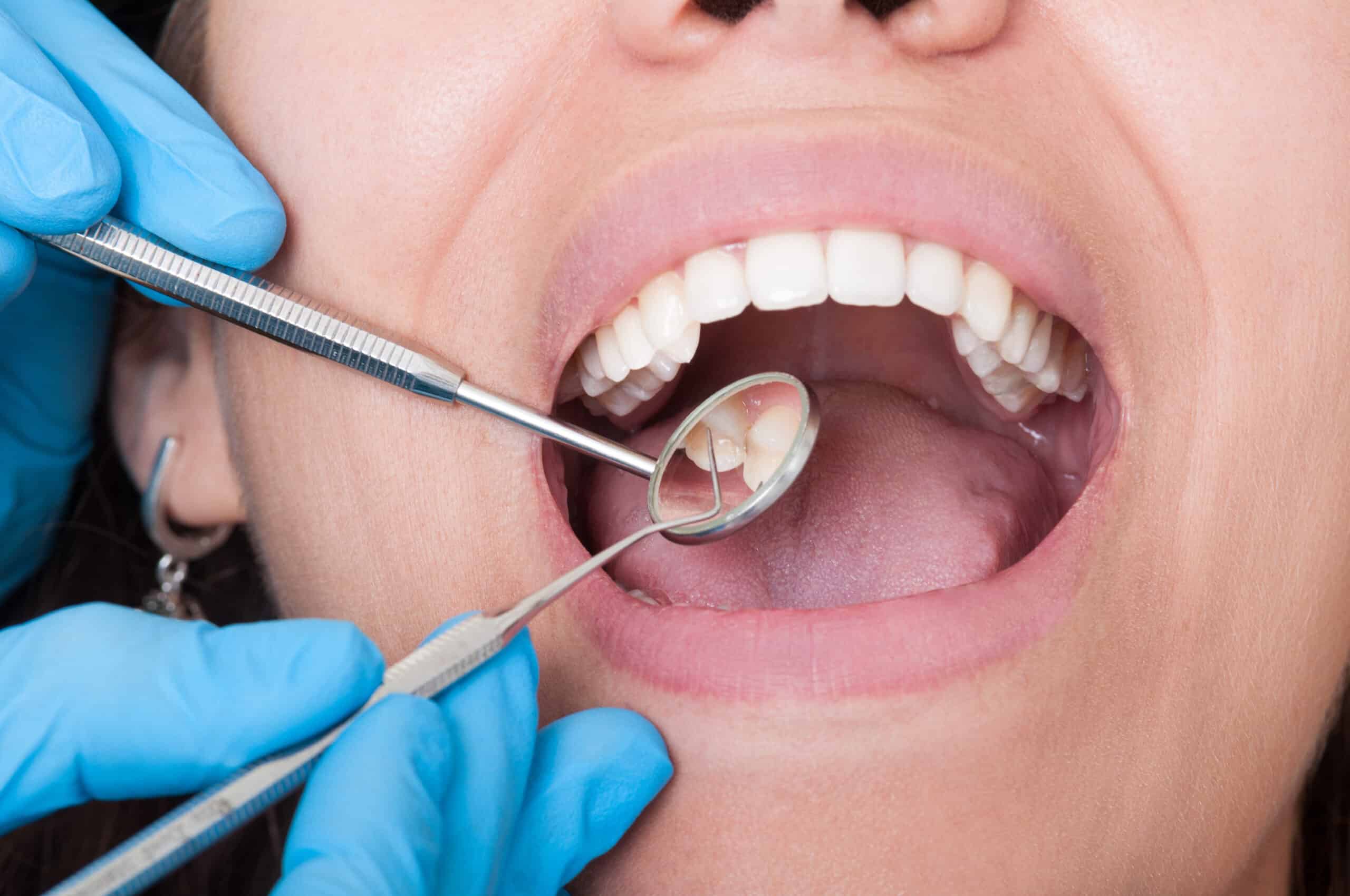Have you ever munched on something sweet or sipped a cool beverage and immediately noticed tooth sensitivity or pain? You could have a cavity, defined by the American Dental Association as a missing tooth structure, rotting from decay or erosion from consuming acidic food and beverages, or abrasion due to brushing too hard.
Cavities left untreated for more than a year can cause tooth loss and threaten your health.
According to the National Institute of Health, 92% of adults between the ages of 20 and 64 have had cavities in their permanent teeth. The best way to determine if you have a cavity is by visiting your dentist for a comprehensive dental exam.

8 Things to Know About Cavities
Many of us have experienced a cavity in our lifetime, but what do we actually know about them? We’re here to break it down for you.
- Cavities are holes in the tooth’s enamel that grow larger and deeper as tooth decay worsens. Typically, it can take anywhere from six months to five years before treatment is required.
- Foods play a vital role in contributing to cavities like sugars and starches. After ingesting certain foods and drinks, plaque (sticky film) coats the teeth, producing acids by harmful bacteria that feed on sugars that attack the enamel (dental erosion). Here is a breakdown of the riskiest, cavity-causing foods and drinks:
- Candy and sugary beverages wreak havoc in the mouth, leading to gum disease, tooth decay, cavities, and bad breath.
- Acidic foods and drinks weaken the enamel, making teeth more susceptible to decay.
- Processed starches like crackers and potato chips nestle into the nooks and crannies of your teeth, making them a popular attraction for bacteria to thrive.
- Dried fruit, gummies, and hard candy easily stick between the teeth and inside of grooves.
- Alcohol dries the mouth out and metabolizes into sugar.
- Some parts of the teeth are more vulnerable than others, including your molars, those with deeper grooves, and areas near the gumline.
- Adults can get cavities even though they are more common in children. Cavities in adults generally form in the roots of the teeth, existing fillings, or crowns.
- A person’s genetic makeup can increase the formation of cavities due to the shape and size of their teeth. For example, if you have deeper grooves in your teeth, plaque accumulates more easily, often requiring more frequent brushing.
- Pain is not always associated with a cavity, especially in the early stages. If you start experiencing discomfort or heightened tooth sensitivity or witness visible stains (black, brown, or white) on your teeth, these may be indications that the cavity has progressed.
- Treatments are available for varying levels of cavities and gum disease. By diagnosing cavities early, your dentist can repair them with a filling before they worsen. Visiting the dentist twice a year will help keep your mouth healthy.
- Cavities are preventable by brushing twice daily, flossing at least once a day, and using fluoride products.
At Asheville Dental, we focus on complete preventative care for our patients. Our state-of-the-art technology and ultrasonic cleaning instruments allow us to detect even the smallest cavities.
Cavities left untreated for more than a year can cause tooth loss and threaten your health. That’s why it’s a great idea to schedule an appointment at Asheville Dental for a comprehensive dental exam, x-rays, cleanings, diagnostics, and more!

Schedule a Cleaning with Asheville Dental
At Asheville Dental, we focus on complete preventative care for our patients. Our state-of-the-art technology and ultrasonic cleaning instruments allow us to detect even the smallest cavities. If you are concerned about your oral hygiene or suspect you may be developing a cavity, contact us today!





